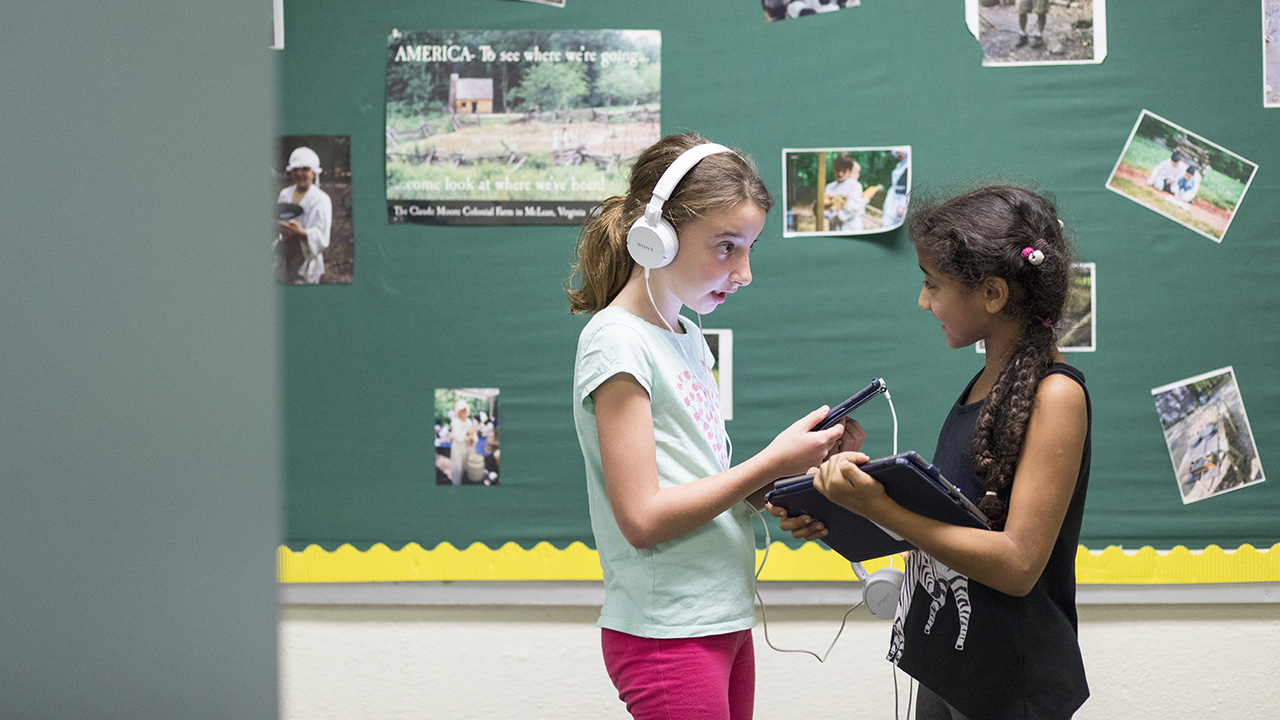A close friend, amazing mother, and wise educator once told me, “Parents come to every moment with a mixture of fear and love, it’s just the ratios that change.” I love the way this describes these emotional drivers working together, rather than in dichotomy to each other. When my son was little and stopped in the middle of a crosswalk on a busy street to pick up the perfect pebble, I parented almost entirely from fear. When we were home and safe, I parented from love and maybe a little exasperation as he shared his ever-expanding tin of treasures with me. Then he saved up enough money to buy his own iPod and things got complicated.
One area that tends to ramp up the fear-driver in many parents is the digital world in which our children now, or will soon, live. As a parent and a teacher, I know my best moments are when a little fear drives me to think critically and love guides me to parent kindly, calmly, and clearly.
Whatever it’s called and whomever is writing the curriculum, most of the major voices in this conversation agree that moving children toward safer behavior online requires more than just one-off events. Looking at the recommendations from the American Academy of Pediatrics (AAP), Common Sense Media, NetSmartz.org, and the Family Online Safety Institute (FOSI), commonalities emerge.
- Talk to children early and often, and evolve the message as they grow.
- Learn how the digital world works. It’s okay if you aren’t a tech whiz and it feels like your kids are already way out ahead of you. Having them teach you is a way to get up to speed and an easy entry into important conversations.
- Set limits and enforce consequences. Revisit and revise regularly.
- Model healthy digital behavior, including well-defined times for disconnecting and paying attention to prosocial vs. antisocial technology use.
This year, Gabrielle Holder, Middle School counselor, Greg Manning, Middle School learning specialist, and I are working together to integrate different areas of digital wellness into the existing GDS health curriculum. Our goals for these lessons are making the connection between healthy online and offline behaviors, scaffolding age-appropriate topics that progress as students mature, and giving these topics a permanent home in the GDS Middle School curriculum.
Greg Manning and I collaborated on a new lesson titled Social Media & the Adolescent Brain. First, students spend time learning the basics of brain biology and neurological development during adolescence, with particular attention to their developing frontal lobe’s role in anticipating consequences, making decisions, logic, and planning. We then invite students to make the connection between what they know about social media and what they know about their brain. Using their student-generated notes, they work in small groups to read and analyze two articles about the teenage brain and social media: The Teenage Brain on Social Media (Wolpert, 2016) and The Secret Social Media Lives of Teenagers (Homayoun, 2017). Finally, students develop PSA-style posters to share information they’ve learned.
Building on Gabrielle Holder’s existing 7th grade health section titled Stress Management, we are developing an additional focus on digital stress. For many students, fear of missing out creates stress. Since they don’t always have the skills or habits to manage that stress, students can end up feeling trapped by a drive to be always “on.” It is important that students learn how to negotiate these stressors by cultivating positive strategies and management techniques that work for them in the often challenging world of middle school. We will be using role-playing, video, and discussion in implementing the lesson.
For 8th grade health, Gabrielle and I worked together to implement a lesson titled Social Media: Image & Impact. Through video and discussion, students explore how social media can impact the way they think about themselves and others in both positive and negative ways. Gabrielle and I present a case study on sexting and ask students to consider the implications such behavior might have throughout the GDS community. Through role-playing and whole-class and small-group discussions, students are able to own the motivations and ripple effects sexting can have beyond their own interpersonal relationships.
As students move through middle school, their personal and educational experiences in the online world evolve and expand. No one voice, assembly, conversation, set of guidelines, or curriculum can make all students wholly embrace the ideas behind digital wellness. We know that many students learn their clearest and hardest lessons through mistakes and exploration. But by repeatedly presenting, discussing, role-playing, modeling, and reflecting on these topics, students begin to develop their own personal script to the navigate the digital world safely.


